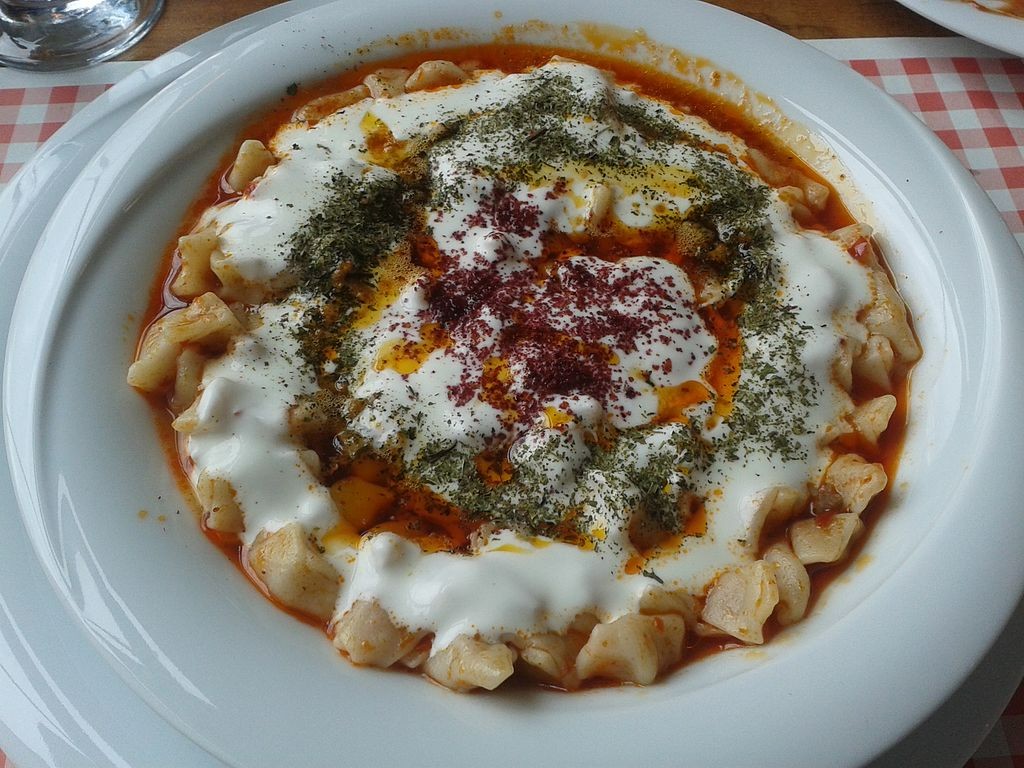Turkish cuisine is a tapestry of flavors, and one dish that stands out for its unique taste and fascinating history is mantı. These delectable dumplings, typically filled with spiced meat and topped with garlic yogurt and butter, have been enjoyed by Turks for centuries. Tracing its roots back to Central Asia, mantı has evolved over time, taking on regional variations and becoming an integral part of Turkish culinary culture. It’s no surprise that our audience repeatedly rates it as among their favorite Turkish dishes. Join us as we delve into the rich history of mantı, exploring its origins, cultural significance, and preparation techniques.

The history of mantı can be traced back to the nomadic tribes of Central Asia, where they are believed to have originated. The concept of dumplings filled with meat was common among various nomadic cultures in the region, including the Mongols and Turkic tribes.
Over time, mantı adapted to local tastes and ingredients, evolving into a distinctly Turkish dish. The geographical proximity of Turkey to the Middle East and the Mediterranean also influenced the flavors and ingredients used in the Turkish version of mantı.
Mantı holds a significant place in Turkish culture, often being prepared for special occasions and family gatherings. It is a labor-intensive dish that requires patience and skill, making it a symbol of hospitality and care. In Turkish households, the process of making mantı is often a communal activity, with family members coming together to prepare the dumplings by hand.
In putting together this piece, despite not having heard of such a thing in over ten years of living in Turkey, we also were informed that in some regions it is believed that the number of mantı one can eat is an indicator of their luck, and it is customary for a host to serve an abundant amount of mantı to guests to ensure their prosperity.
As mantı spread across Anatolia, different regions put their own spin on the dish, resulting in a wide range of regional variations. One prominent variation is Kayseri mantı, which features small dumplings filled with a mixture of ground lamb, onions, and spices. These dumplings are boiled and served with melted butter, tomato sauce, and topped with pepper or sumac.
In the southeastern part of Turkey, Gaziantep mantı takes center stage. These dumplings are tiny, almost resembling miniature tortellini, and are filled with a mixture of ground lamb, onions, and various spices. Gaziantep mantı is known for its rich and complex flavors, with the dumplings being served in a warm broth with melted butter and a sprinkle of crushed red pepper.
Preparing mantı is a meticulous process that requires attention to detail. The dough is rolled out thinly and cut into small squares, then filled with the desired meat mixture. The edges of the dough are carefully pinched together to create small pockets that hold the filling securely. Once assembled, the mantı are boiled until cooked and then drained.
For those lookıng for a bit of creative, culinary fun with friends, preparing mantı can be a really great activity to participate in as a group. Doing it all by hand can be a bit time consuming, but it’s a wholesome experience and the results are worth it.
Traditionally, manti is served with a garlicky yogurt sauce and drizzled with melted butter infused with herbs and spices. Tomato sauce, chili flakes, sumac, and fresh herbs like mint or dill may also be added as garnishes. The combination of tender dumplings, creamy yogurt, and aromatic butter creates a harmonious medley of flavors.
From its nomadic beginnings in Central Asia to its prominent place on Turkish dinner tables, manti has a rich and fascinating history. The evolution of this beloved dish demonstrates the culinary prowess and cultural diversity that characterizes Turkish cuisine. Whether you’re savoring traditional Kayseri manti or exploring regional variations, each bite of these delicate dumplings carries the echoes of a centuries-old culinary tradition. So, next time you have the opportunity to try manti, take a moment to appreciate the artistry and heritage that have shaped this delightful Turkish delicacy.









